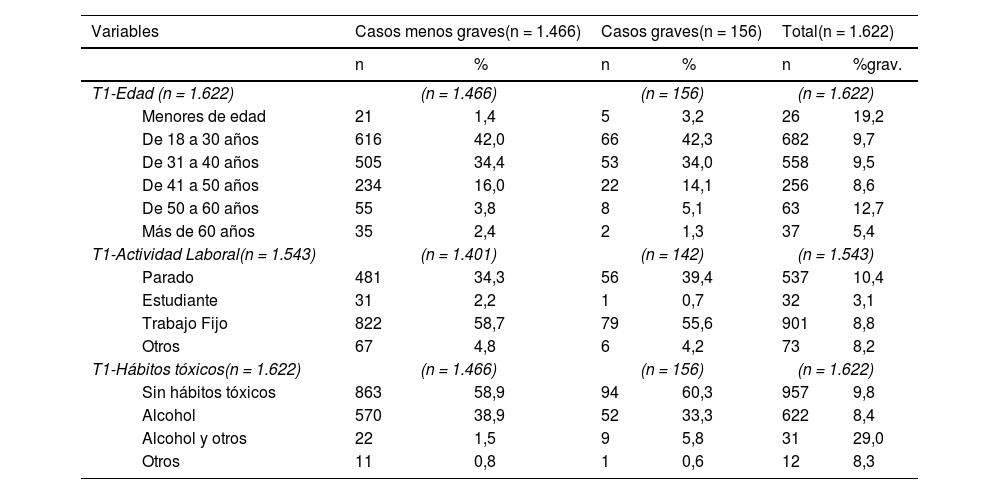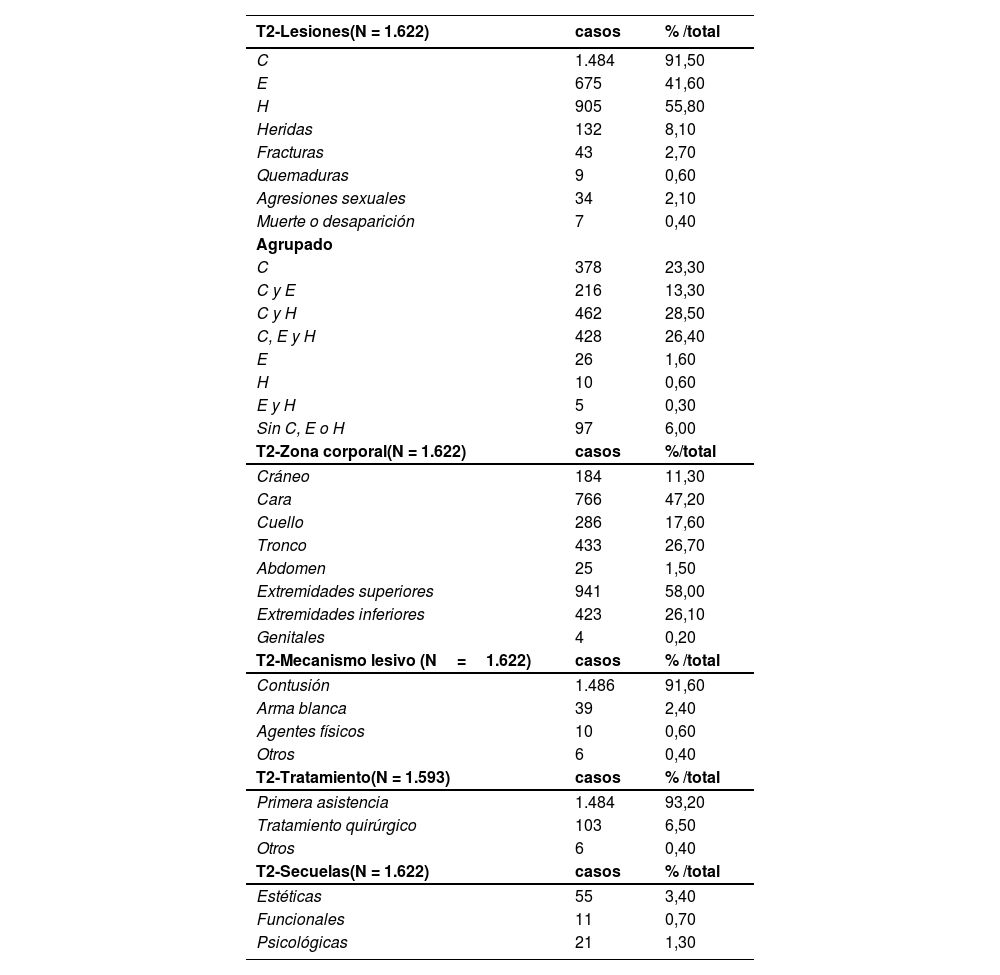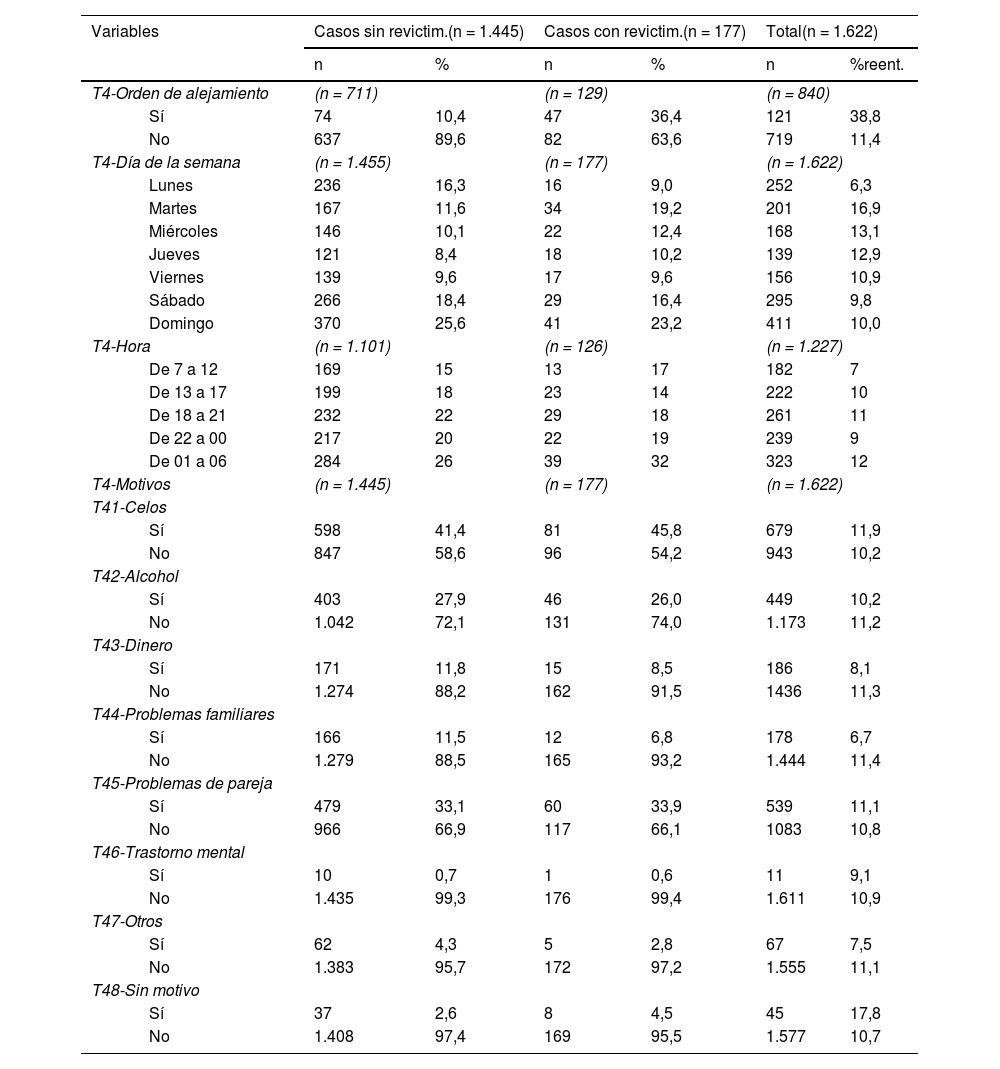la violencia contra la mujer sigue siendo un grave problema social y de salud a pesar de las medidas puestas en marcha en los últimos años. La exploración de las víctimas por el médico forense en los juzgados es de gran interés puesto que recibe información relacionada no solo con la agresión, sino también de su entorno social, familiar y económico. El objetivo es utilizar dicha información para identificar grupos de riesgo y mejorar/obtener las medidas necesarias.
Material y métodosen este trabajo, el forense ha recogido, durante 8 años, una toma abundante de datos sobre las víctimas exploradas en L’Hospitalet de Llobregat. La muestra incluye 1.622 casos de mujeres víctimas de violencia de género. Se realiza un estudio descriptivo poblacional y de las lesiones.
Resultadosse exponen las principales variables estudiadas tanto socioeconómicas como referentes a la agresión en sí. Se trabaja también con base en la reentrada de las víctimas o repetición de las agresiones (revictimización), que son el 10,9% de la muestra. Finalmente, se presentan los resultados obtenidos tras aplicar técnicas de inteligencia artificial, en este caso, árboles de clasificación CaRT.
Conclusionescon los resultados obtenidos concluimos que el tratamiento de la información recogida y sistematizada de la intervención médico-forense permite una mejor comprensión de la violencia sobre la mujer, de la que podemos extraer sugerencias sobre la adopción de medidas de atención y soporte a las víctimas y a los colectivos más vulnerables, así como sobre los recursos administrativos y la optimización de programas de prevención.
Violence against women is still a serious social and health problem, despite the measures implemented in recent years. The examination of the victims by the forensic doctor in the courts is of great interest since it provides information related not only to the aggression, but also to their social, family and economic environment. The objective is to use this information to identify groups at risk and improve/implement the necessary measures.
Material and methodsIn this work, the forensic has collected, for eight years, abundant data on the victims examined in L'Hospitalet de Llobregat. The sample includes 1,622 cases of women who have been victims of gender violence. A descriptive study of the population and of the lesions has been carried out.
ResultsThe paper presents the main variables studied, both socioeconomic and referring to the aggression itself. This study also analyzes the reentry of the victims, the repetition of aggressions (revictimization), which are 10.9% of the sample. Finally, the results obtained after applying artificial intelligence techniques -in this case, CaRT classification trees- are presented.
ConclusionsWith the results obtained, we conclude that the treatment of the information collected and systematized from the medical-forensic intervention allows a better understanding of Violence Against Women, from which we can extract suggestions on the adoption of care and support measures for the victims and the most vulnerable groups, as well as administrative resources and the optimization of prevention programs.












